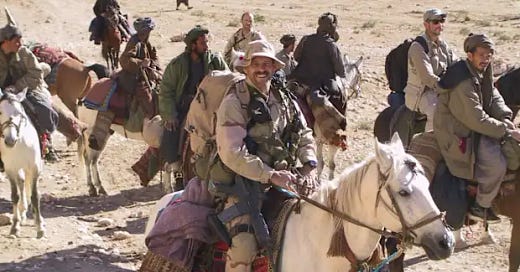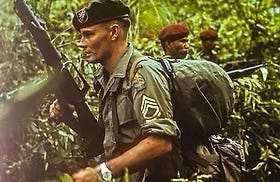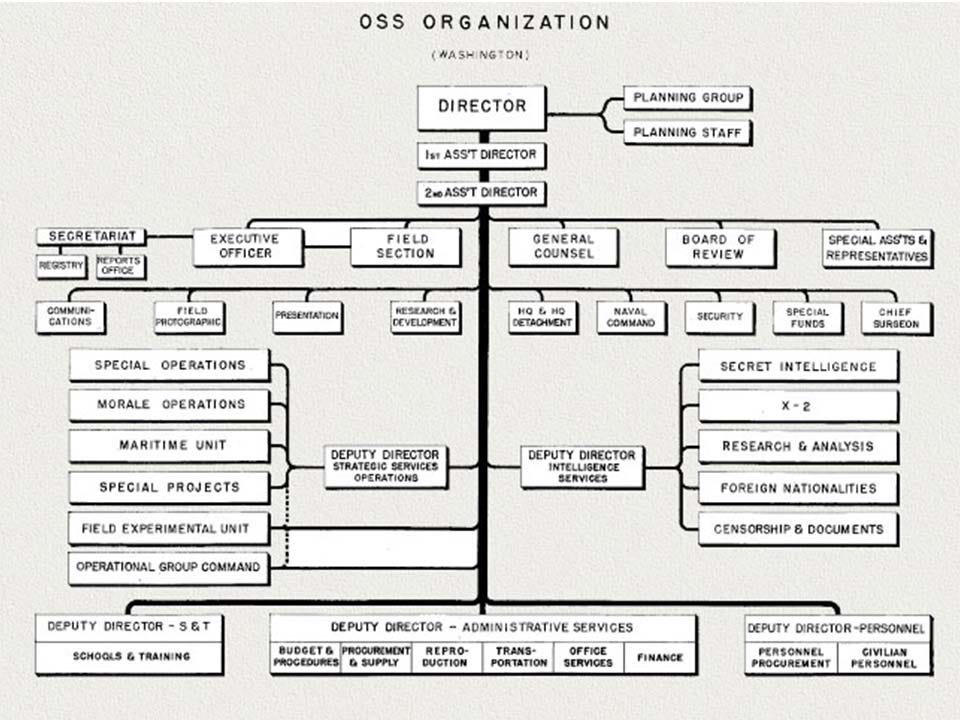Know Your Special Operations Forces, Part 1: The Green Berets
They are simultaneously everywhere and nowhere
This is the first installment in a monthly series exploring U.S. Special Operations Forces (SOF). With the U.S. Space Force contemplating the creation of its own SOF unit, it's time to clarify some common misconceptions and provide a foundation for understanding the SOF world. It’s important for laypeople to understand what SOF is as they are key driving factors in the U.S. military’s adoption of systems. Take Palantir, for example. Palantir became a company the general public recognizes last year. Palantir has worked with SOF since 2015 with their first Special Operations Command (SOCOM) contract in 2016. By the time the conventional military formations caught up in 2019-2020, Palantir already formed the backbone of SOF data and intelligence analytics. This is just one snap shot. SOF soldiers in Operation Desert Storm were some of the first to use Global Positioning System devices in combat. SOF has led the proliferation of night-vision devices, and advances/changes in medical equipment. This shows the importance of this small portion of the U.S. Military in acquisitions.
US SOF have also been at the leading edge of US combat deployments for much of the last 24 years. The images of “The Horse Soldier” and the capture of Saddam, the SEAL raid on the Bin Laden compound and subsequent 17 books about the secret operation keep SOF in the forefront of American’s minds when they think about the U.S. military.
SOCOM is the headquarters for all SOF. Confusingly, SOCOM wears a lot of hats, they prove some of the money and equipment to SOF units, but not all. They are responsible for the deployment of SOF units, but only sometimes, and they provide some of the support like pay and admin services, but only a few of those. Meanwhile, each service—Army, Navy, Navy’s men’s department (Marines), Air Force—provides the lion’s share of support to their SOF elements. The services also provide the most valuable component, the people. You can imagine, this creates friction with frequent shouts of “you’re not my real dad!” aimed at whomever offended the unit on that day.
The most common mistake I see reporters and laypeople make is referring to any SOF unit or person as “Special Forces.” Words have meaning and in the U.S. military, Special Forces refers to U.S. Army Special Forces, the Green Berets. Whole SEALs, Rangers, and PJs are all SOF, none of them are Special Forces.
This photo is of a Green Beret in Thailand in the 1970s and is a good photo definition of what Green Berets do. They train with partners and allies and, when called on, they help those partners coerce, disrupt, or overthrow hostile powers. The Green Beret in this photo was part of the 42nd Company. This company lived in Thailand and helped train Thai soldiers fought against Cambodian and Vietnamese soldiers during the Vietnam War. (A good book on the subject is The Green Berets in the Land of a Million Elephants.)
U.S. Army Special Forces trace their heritage to the Office of Strategic Services (OSS) during World War II. The CIA makes the same claim, in a way they are both right and both wrong, but it is always good to have a lineage back to the “the good war.”
The SOE and OSS
The OSS owes, at least a part of, its existence to the Special Operations Executive. This organization, founded in 1940, specialized in conducting sabotage, raids, and ambushes against Nazi and Axis forces in Europe. The SOE, and its competitive units, the Special Air Service (SAS) and the Special Boat Section (SBS, later Special Boat Service.) American military leadership, particular in the person of the highly active and highly connected William “Wild Bill” Donovan, wanted to have a hand in the “irregular warfare.” This led to the creating of the OSS.
The OSS existed in an odd position within the military rather than operating as a part of the Army or the Navy, the OSS reported directly to the Joint Chiefs of Staff. This, of course, lead to conversation and conflict between the OSS and its larger brothers. But, the OSS enjoyed the protection offered by Donovan’s close relationship with FDR.
The OSS was not just commandos and raids, this was, in fact, just a small portion of the force. However, fighting was in its blood. Donovan claimed that the OSS was looking for PhDs that could win a bar fight. You can imagine, this was a tough description to fit and came with the accompanying negative personality traits, namely hubris, that rubbed other soldiers, sailors, and marines the wrong way.
The OSS split itself into two focus areas. One was intelligence and counter-intelligence operations, which at times ran afoul of Army and Navy intelligence. The other was special operations, which often ran afoul of Army and Navy leadership, Allied militaries, and their own intelligence section. Despite its growing pains, it was only five when it was disbanded, the OSS held a wider purview than any other military unit in U.S. history. The OSS gathered intelligence, worked with foreign national partners, conducted operations behind enemy lines, ran U.S. propaganda efforts, and conducted weapons testing and experimentation. At their peak, this was done by 13,000 personnel, a paltry number in an 16,000,000 person military.
There is a much longer story to be told about the rise and fall of the OSS and many authors have told it well. (In the notes I recommend a few.) But, suffice it to say, President Truman did not share FDR’s belief in Donovan or see a reason to keep the OSS around with the war ended. The Departments of the Army and Navy leapt at the chance to kill off their weaker rival and, shortly after the conclusion of the war, did just that. On September 20th, 1945, the OSS disbanded. However, alumni of the OSS, many from Ivy League backgrounds, went on to be founding members of the CIA (Allen Dulles, William Casey, William Colby, and Richard Helms), become a much beloved television Chef (Julia Child), A Supreme Court Justice (Arthur Goldberg), and write one of the great American novels (John Steinbeck).
The Cold War and the Return of the Special Operator
For a short period, the U.S. enjoyed a monopoly over atomic weapons and saw no need to engage in the shadow game against its new nemesis, the Soviet Union. In 1949, that short period of dominance ended. It must have seemed like end times for the U.S. leadership. Mao’s Communists fighter drove the Chinese Nationalists off the mainland and to Taiwan in 1949 followed by a Soviet atomic detonation a decades earlier than Americans predicted possible must have seemed like an existential threat. Then, in 1950, North Korea invaded South Korea.
The Lodge Act and The Green Berets
In an attempt to better prepare the U.S. military for the coming Cold War Henry Cabot Lodge proposed a law to allow 2,500 unmarried foreign nationals to join the U.S. military as a path to citizenship. From 1950 to 1955, while the law was in place, Special Forces units added hundreds of Eastern European soldiers to their rolls. This, combined with the 1952 formal establishment of the 10th Special Forces Group, allows the U.S. to create a realistic theory of a stay behind group able to operate in Europe after a Soviet invasion. It also helped to set the standard for what Green Berets would focus on for the next several decades.
Mission and evolution
What is a Special Forces soldier? What do they do? The basic structure of a Special Forces Team (an Operational Detachment Alpha, you know like the A-Team) is largely unchanged since the 1950s. Today, it is a twelve-man (mostly men) team with two medical sergeants, communication sergeants, engineer sergeants, and weapons sergeants, and one each officer, warrant officer, team sergeant, and intelligence sergeant. To be a team sergeant a soldier normally has two jobs (called military occupational specialities), and warrant officers normally are prior sergeants, though there is a small percentage that are former officers. This makes the detachment older than most units even within SOF, which is normally older than line military units on average.
These soldiers primary mission is unconventional warfare, a mission that traces back to the OSS and SOE. However, over the years, in particular with the end of the Cold War the Green Berets found themselves serving as connecting tissues between U.S. and allied forces. This role changed some with the rise of the Global War on Terror as Special Forces increasingly trained in foreign internal defense (training friendly nation militaries), counterterrorism, counterinsurgency (which is in part training to counter their own primary mission of unconventional warfare), counter-weapons of mass destruction, direct action, and reconnaissance. However, these mission largely share a common thread, they are focused on people and groups, and not seizing and occupying territory.
Green Berets and the Future
I would be lying if I said I knew what the future of any SOF unit is. SOF writ large is undergoing massive changes as less of the population in the U.S. is qualified for military service and technology continues to change the face of combat. With the rise of the internet of things, connected surveillance systems, and computer vision the idea that an American, even one born in another country, could hide and lead a rebellion against an occupying power is harder to believe. That said, there is value in having smart and intelligent people able to make connections abroad, train partners and allies, and draw adversarial attention.
Will future Green Berets need to speak a foreign language if technology allows for instantaneous accurate translations? No, but my sense is the intelligence measures the ability to learn a second language demonstrates will still be part of their assessment, selection, and training. So far, no matter how much technology advances, warfare is still a people business and Green Berets serve as a connecting layer between the U.S. and other forces, and have since their inception.








46 Company, not 42.
So green berets are like land seals? That's what I got out of this